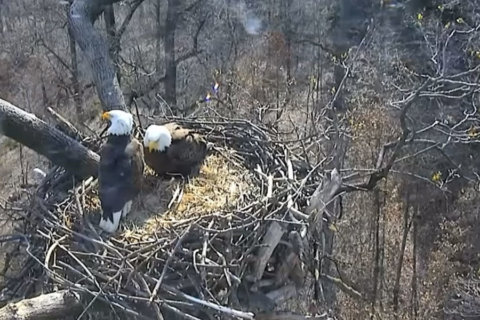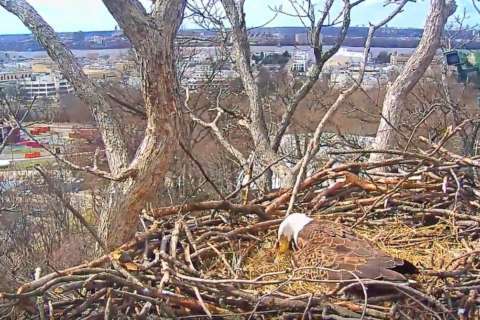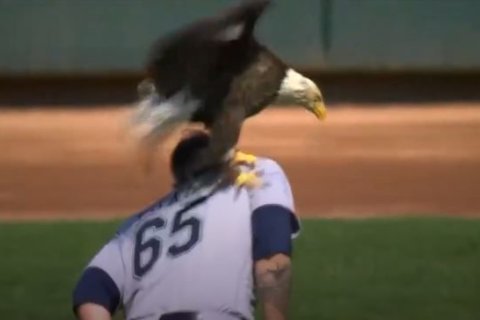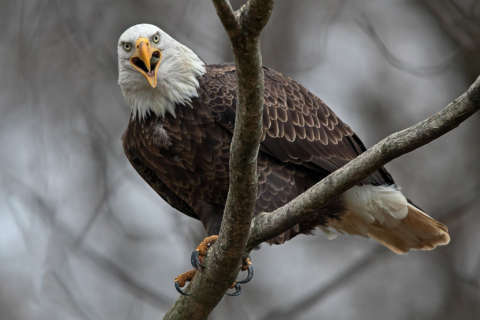WASHINGTON — Mr. President and The First Lady, the popular bald eagle couple that calls the U.S. National Arboretum home, has welcomed their first chick of the laying season to the nest Monday.
The chick emerged from one of two eggs, high atop a tulip poplar tree. The eaglet, named DC-6 for now, looks healthy, according to biologist Dan Rauch with the D.C. Department of Energy and the Environment.
“We got our first pip yesterday, just before noon, and it just took 24 hours almost. And DC-6 has hatched fully and is looking great,” Rauch said.
The chick in the second egg, known as DC-7, is expected to begin pecking its way out anytime between now and Wednesday, he said.
This hatchling comes late in the season for the eagle couple that in previous years laid eggs much earlier. Rauch believes two things may have led to the late season for the birds.
The first possible culprit was a young female bald eagle that had been spotted at the nest. Rauch said the bird could be from another brood, or just another young eagle eyeing Mr. President and The First Lady’s prime piece of D.C. bald eagle real estate.
“When they chose this location, it was for a reason. It’s right next to the river, it’s got a great view, and it’s in a secure area with plenty of land around and a very big, tall, strong tree for a nest, so it is a perfect spot,” Rauch said.
The second distraction this laying season may have been a raccoon that was spotted near the nest.
Rauch said this couple is part of a big rebound the D.C. area is seeing in its bald eagle population. The National Park Service recently counted the nests along the Potomac and Anacostia rivers and counted 21 nests. The nest total is up from 15 nests last year.
“They’re filling back in, which is fantastic,” Rauch said.
He attributes the bird’s success with the continued improvements in the health of the river system and the bird’s ability to quickly adapt to the urban environment that makes up D.C.
He added, “There is lots of traffic and noise, and helicopter traffic on the river, and they’re really adapting to that and thriving.”
To catch the first family of bald eagles in action, watch their live webcam from the American Eagle Foundation.









